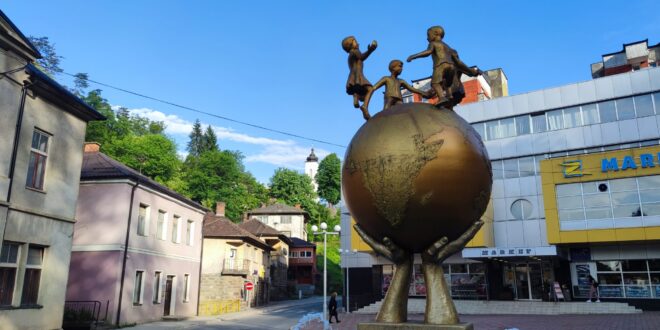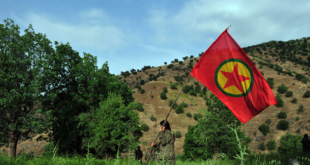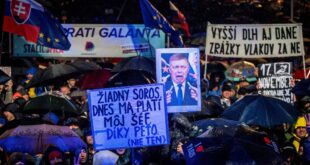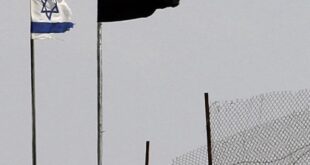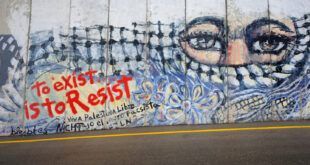War memorials are dotted all over Bosnia and Herzegovina, but rarely are they unveiled without controversy. They have cost more than 5 million euros in the past decade, and experts say few have really contributed to reconciliation.
Irmela Sabanovic was five years old in the middle of the 1992-5 war in Bosnia and Herzegovina when she last saw her father, Fuad Malic. Early childhood memories are the only memories she now has of him.
She especially remembers a birthday present from him, a children’s skirt called a lambada. “It was white with black dots. That is the only memory I have of him,” Irmela says, recalling her
last meeting with her father in 1993, when she left Srebrenica in eastern Bosnia with her mother.
“He came back for that skirt and brought it to me. That was our last meeting and farewell. I literally cried during the whole journey by bus.”
Today, Irmela is the same age as her father was in July 1995, when he was killed by Bosnian Serb forces in the Kravica agricultural cooperative, near Bratunac.
She finds it very hard that she can no longer enter the cooperative to lay flowers and recite the al-Fatihah. “After all, that is where he passed away,” she says. [The company owning the site no longer allows visitors.]
She first entered the Kravica hangar in 2013. She had found his remains at two locations near Zvornik. These mass graves have not yet been marked with official monuments or inscriptions.
For years, the only signs at the site of the mass killings in Kravica were bullet holes in the wall. The local authorities did not allow, or build, any monument to those killed there.
In 2022, instead of a monument to the victims, they invested in the renovation of the hall, whose bright new facade does not give the impression that hundreds of people were shot dead there in 1995.
Bratunac municipality, which is in Bosnia’s Serb-led Republika Srpska entity, has spent more than 190,000 Bosnian marks on these works. According to data collected by BIRN, in the past four years the municipality has not allocated any money for monuments to Bosniak victims of the 1995 genocide in Srebrenica, or for the marking of mass graves.
Since the beginning of 2020, local authorities in Bosnia and Herzegovina have allocated over 5.5 million Bosnian marks [2.3 million euros] for the construction of war monuments, dedicated almost exclusively to the majority community in their municipalities.
The total amount spent on the construction and maintenance of war monuments in Bosnia over the last ten years has exceeded ten million Bosnian marks [5 million euros].
But how much has this money really contributed to the transitional justice processes, especially to memorialization as one of the pillars of that process?
Monuments erected ‘as a provocation’
For Irmela, the money that Bratunac spent on renovating the hall in which Srebrenica genocide victims were killed is “a sort of arrogance, spite and provocation”.
In Bratunac itself, a monument with an inscription says it was built for the 3,267 Bosnian Serb fighters and civilians from the Birac region killed in the “Defence-Homeland War”, and for Serbs from the central Podrinje killed in World War Two.
Bratunac is one of 85 municipalities in Bosnia that responded to BIRN’s query, sent to all cities and municipalities, on how much money they have allocated for monuments since 2020.
Previously, BIRN collected data for the period from April 2015 to 2019. According to this data, municipalities and cities in Bosnia issued tenders to construct memorials to the military and civilian victims of the 1992-5 war worth over 4 million Bosnian marks [over 2 million euros].
Representatives of war victims say these monuments were almost always erected to the local majority community, and to spite the others. Experts agree they have not contributed to peacebuilding. Over the same period, about one million Bosnian marks was announced for the rehabilitation and maintenance of monuments.
Bosnia has never adopted a state-level law on monuments to victims of the war, so monuments are erected in various places, without clear and harmonized criteria.
Their appearance and content and who they are dedicated to, are left to the discretion of local authorities, so they are often used to send what some might see as messages of hatred rather than reconciliation.
Memorialization in Bosnia and Herzegovina in the post-war period is marked by the absence of a uniform, systemic state effort to mark places of remembrance, legal expert Lejla Gacanica wrote in a document she prepared for BIRN.
In her policy paper, she states that this is partly because there is no clear policy or guidance on what should be marked, where, and in what way.
Erection of monuments in Bosnia and Herzegovina is essentially a political issue, Gacanica writes, adding that they often carry a clear political message about who the victims, perpetrators and defenders were. There is also a refusal to mark certain events and past sufferings.
Memorials to both military and civilian victims from one ethnic group or other have been erected in places of return, in public places, in schools and cultural institutions, as well as at the sites of suffering of members of another ethnic group, or in returnee settlements where members of only one ethnic community live.
This has arguably had a negative effect on the process of reconciliation, as well as on the return and sense of security of returnees.
Gacanica considers this fragmented approach to the construction of monuments and the organisation of commemorations beyond the “big” already established ones a consequence of disunity about the past, in which victims and their needs are being neglected.
It is partially also a consequence of the absence of clear and uniform legislation on the construction of monuments commemorating the war of the 1990s.
Entity and cantonal laws, as well as the law in Brcko District on spatial planning and land use, form the basis for the erection of most memorials in Bosnia.
Consent for the erection of monuments is most often given by the urban planning departments of local governments. However, legislation doesn’t establish set criteria and standards for erecting memorials in terms of transitional justice.
Bosnia’s 2014 Transitional Justice Strategy, which has never been officially adopted, envisaged the possibility of constructing a single memorial to all victims of the 1992-5 war as well as a single uniform type of memorial to all victims in local communities.
The question of memorials is crucial for the strategy.
Victims’ associations, as well as human rights defenders, blame politicians for not wanting to adopt a law that would define what can be marked and erected, and where.
Associations from all three ethnic communities in Bosnia meanwhile face the same problem; if an ethnic group is the minority in a municipality where they want to erect a memorial, it will not be approved.
Monuments encourage reconciliation – or division?
Monuments are far less often erected to civilian victims of war and even less often to victims regardless of ethnicity. Only five have been erected to all civilian victims, irrespective of their ethnic affiliation. One of them is in Vares, in central Bosnia.
On the square in front of the municipality building, in the shape of a column, without religious and ethnic insignia, the inscription reads: “Pay homage in your own way.” It is in danger of being removed, as it did not pass the necessary legal procedure.
Similar monuments exist only in Zepce, Bosanski Petrovac and Brcko. The “Monument to Peace” in Srebrenica, meanwhile, built in 2020, has caused resentment. Symbolically unveiled on the International Day of Peace, it has exacerbated divisions between the town’s Serbian and Bosniak communities, with some considering it a good idea and others seeing it as hypocritical, as it is not based on the recognition of the genocide committed in 1995.
Srebrenica mayor Mladen Grujicic told BIRN that a municipal assembly session voted for “the erection of a monument that will be universal and without direct connection with victims of the last war”.
But the Association of Mothers of Srebrenica and Zepa Enclaves, an NGO, condemned the decision.
“How he [the mayor] can even stand in front of the Bosniak people or say anything at all with that denial of his … his denial of genocide and minimization of victims. What a hypocrisy it is for him to build a monument to peace in Srebrenica,” says member Sahida Abdurahmanovic.
On November 15, 2021, a memorial to victims thrown into a pit at Kazani was unveiled at Kazani, above Sarajevo, but without the presence of families of the victims. The inscription reads: “We will forever, with sadness and respect, remember our murdered fellow citizens”, listing the names of 17 victims.
The City of Sarajevo allocated 7,000 Bosnian marks [3,574 euros] for this monument. But family members of those killed there criticised the decision because the monument did not name the crime’s perpetrators. The exact number of people killed and thrown into the Kazani pit has not been determined either to date. The memorial has already been sprayed with graffiti.
Since 2012, meanwhile, parents of children killed in Prijedor during the war have been trying to obtain a permit to build a monument to the 102 children killed in the town.
Each year, when marking ‘White Ribbon Day’ in the town, parents and survivors hope to mark the next anniversary in front of a monument.
A few years ago, the surviving victims also filed an official request with the Missing Persons Institute of Bosnia and Herzegovina and with Prijedor town to mark the graves, because, under the Law on Missing Persons of Bosnia and Herzegovina, families are entitled to it.
But the law is a dead letter, says Mirsad Duratovic, of Prijedor 92 Association of Detainees, an NGO. He believes no institution can enforce it.
“Besides having an adopted and passed law, and the Institute dealing with these issues, we are asking the international community to protect mass graves. Why don’t institutions in this country do their job?” he asks.
The law allows for families of the missing and associations to request the marking of sites where human remains were discovered. The condition is to have a certificate from institutions that there was a grave at that site. The subsequent procedure involves the local level of the municipality or city.
But the only memorial established by the law, with a clear goal “to create a dignified place for burial of persons who died as a result of the events in Srebrenica”, by a decision of the High Representative in 2000, is the Srebrenica Memorial Center for victims of the genocide.
 Eurasia Press & News
Eurasia Press & News
